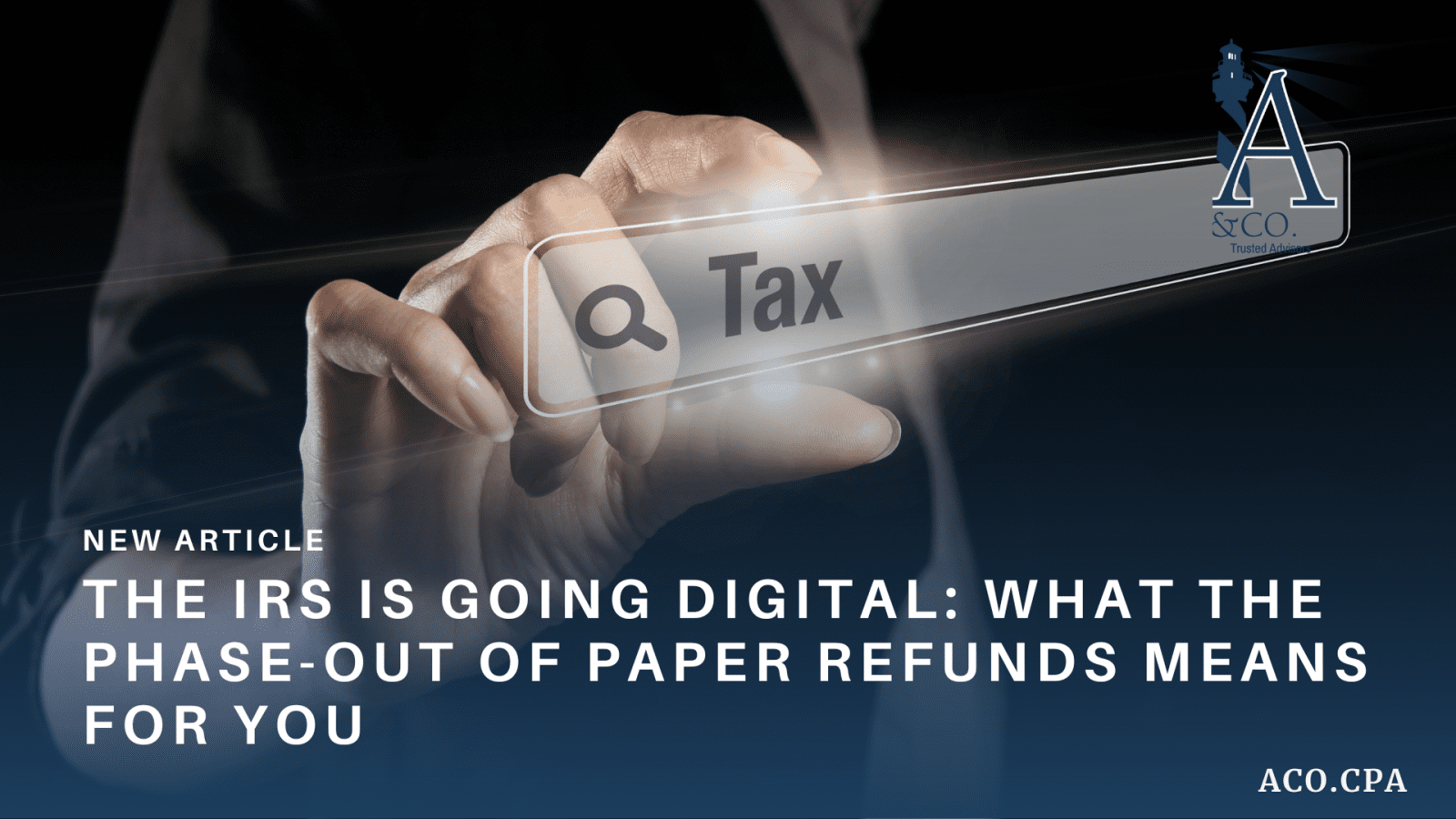The IRS has announced significant changes that will reshape how taxpayers file, receive refunds, and communicate with the agency. At the center of these updates is the phase-out of paper refund checks, which officially began on September 30, 2025, as part of a broader federal initiative to modernize tax administration.
Paper Refunds Are Being Phased Out
Beginning this fall, most individual taxpayers will no longer receive paper refund checks by mail. Refunds will instead be issued electronically through direct deposit or other digital payment methods.
The goal of this change is to speed up refund delivery, reduce the risk of fraud, and lower administrative costs for both taxpayers and the IRS. If you typically receive your refund by check, it’s important to update your direct deposit information as soon as possible. This will ensure that your refund is issued promptly and without interruption during the upcoming tax seasons.
A Broader Push Toward Modernization
The elimination of paper refunds is just one part of the IRS’s ongoing efforts to modernize its systems. The agency is re-evaluating and upgrading key technology projects to integrate artificial intelligence and advanced analytics into tax processing, compliance, and enforcement.
While certain modernization initiatives were temporarily paused earlier this year to reassess how best to deploy AI tools, the overall direction is clear: tax administration is becoming more digital, more automated, and more data-driven. This modernization is expected to improve processing efficiency but may also lead to more precise and targeted IRS enforcement activity in the years ahead.
What This Means for 2026 Tax Season
For the 2026 filing season, taxpayers should expect a faster, more digitally driven filing process. Refunds will be issued exclusively through electronic methods for most filers, so ensuring your bank information is current will be essential. In addition, with the IRS expanding its use of advanced data analytics, returns may be processed more quickly, but errors or discrepancies could also be flagged more efficiently.
Accounting firms will likely experience more seamless e-filing workflows, but clients should be prepared for increased electronic communication and potentially fewer paper notices. Taking time now to gather accurate records and update contact information will help ensure a smooth filing season.
Additional Updates for Tax Professionals and Taxpayers
The IRS has also announced a reduction in the user fee for PTIN (Preparer Tax Identification Number) renewals and applications, offering some cost relief for tax preparers. Over time, taxpayers should also anticipate a shift toward digital correspondence, with fewer paper notices and more secure online communications.
What You Should Do Now
- Verify your direct deposit details to avoid refund delays.
- Prepare for increased digital communication from the IRS.
- Stay informed about upcoming changes to filing procedures and timelines.
The IRS’s modernization push represents a major step toward a more efficient tax system. By taking simple steps now, especially updating banking information and preparing for digital interactions, you can ensure a smooth transition as these changes take effect. Consult with your service team at Accavallo & Company for more information.



